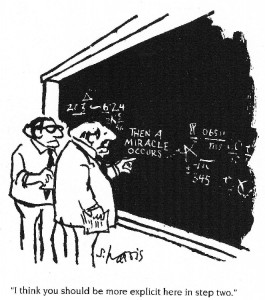El asteroide que se aproxima a la Tierra tiene su propia luna
31 de mayo de 2013: El asteroide 1998 QE2 que se aproxima a la Tierra tiene una luna. Los investigadores la encontraron en una secuencia de imágenes de radar obtenidas a través de la antena de 70 metros de la Red del Espacio Profundo (Deep Space Network, en idioma inglés), ubicada en Goldstone, California, en la tarde del 29 de mayo (30 de mayo hora universal), cuando el asteroide se encontraba a unos 6 millones de kilómetros de la Tierra.
La estimación preliminar del tamaño del satélite del asteroide es de aproximadamente 600 metros de ancho. El asteroide en sí posee un diámetro de alrededor de 2,7 kilómetros y tiene un período de rotación de menos de cuatro horas.
Las observaciones que se llevaron a cabo mediante un radar fueron lideradas por la científica Marina Brozovic, del Laboratorio de Propulsión a Chorro (Jet Propulsion Laboratory o JPL, por su sigla en idioma inglés), de la NASA, ubicado en Pasadena, California.
Estos hallazgos muestran que el 1998 QE2 es un asteroide binario. En la población de objetos cercanos a la Tierra, alrededor del 16 por ciento de los asteroides de 200 metros de ancho o más son sistemas binarios o triples. También se revelan en las imágenes de radar obtenidas de 1998 QE2 varias características superficiales oscuras que sugieren grandes concavidades.
El máximo acercamiento del asteroide se producirá el 31 de mayo a la 1:59 de la tarde, hora del Pacífico (4:59 de la tarde, hora del Este / 20:59 GMT), cuando el asteroide llegará a estar a una distancia no mayor que aproximadamente 5,8 millones de kilómetros, o lo que equivale a alrededor de 15 veces la distancia que existe entre la Tierra y la Luna. Este es el máximo acercamiento que el asteroide hará a la Tierra durante al menos los próximos dos siglos. El asteroide 1998 QE2 fue descubierto el 19 de agosto de 1998 por el programa Lincoln de Investigación de Asteroides Cercanos a la Tierra (Lincoln Near Earth Asteroid Research o LINEAR, por su acrónimo en idioma inglés), del Instituto de Tecnología de Massachusetts, ubicado cerca de Socorro, Nuevo México.
La resolución de estas imágenes iniciales del asteroide 1998 QE2 es de aproximadamente 75 metros por píxel. Se espera que la resolución aumente en los próximos días a medida que se disponga de más datos. Entre el 30 de mayo y el 9 de junio, los astrónomos que utilizan radares llevarán a cabo una amplia campaña de observaciones en el asteroide 1998 QE2 mediante el uso de la antena de la Red del Espacio Profundo, que se encuentra en Goldstone, California y a través del Observatorio de Arecibo, en Puerto Rico. Los dos telescopios tienen capacidades de imagen complementarias, lo que permitirá a los astrónomos aprender tanto como sea posible sobre el asteroide durante su breve visita cerca de la Tierra.
Manténgase atento para obtener actualizaciones sobre el tema.
Más información
La NASA le otorga una alta prioridad al seguimiento de asteroides y considera que proteger a nuestro planeta de ellos es también de suma importancia. De hecho, Estados Unidos cuenta con el programa más potente y productivo de sondeo y detección de la localización de objetos cercanos a la Tierra. Hasta la fecha, mediante recursos estadounidenses, se han descubierto más del 98 por ciento de los conocidos Objetos cercanos a la Tierra.
En el año 2012, el presupuesto para la monitorización de los objetos cercanos a la Tierra pasó de 6 millones de dólares a 20 millones de dólares. Literalmente, docenas de personas están involucradas en algún aspecto de la investigación de los objetos cercanos a la Tierra a través de la NASA y de sus centros. Por otra parte, hay muchas más personas comprometidas con la investigación y la comprensión de la naturaleza de los asteroides y cometas, incluyendo a aquellos objetos que se acercan a la Tierra, más los que intentan encontrarlos y seguirlos en primer lugar.
Además de disponer de los recursos para la comprensión de los asteroides, la NASA también se asocia con otras agencias del gobierno de Estados Unidos, así como con astrónomos de universidades e institutos de ciencias espaciales de todo el país, que están trabajando para hacer un seguimiento y lograr una mejor comprensión de estos objetos, a menudo con subsidios, transferencias interinstitucionales y otros contratos con la NASA.
El programa de Objetos Cercanos a la Tierra, de la NASA, en la sede central ubicada en Washington, gestiona y financia la búsqueda, el estudio y el seguimiento de asteroides y cometas cuyas órbitas los traen periódicamente cerca de la Tierra. El JPL dirige la Oficina del Programa de Objetos Cercanos a la Tierra para el Directorio de Misiones Científicas de la NASA, en Washington. El JPL es una división del Instituto de Tecnología de California, en Pasadena.
Fuente: Noticias Ciencia de la NASA







